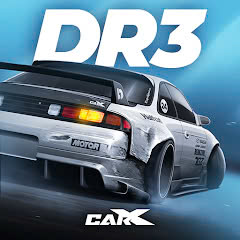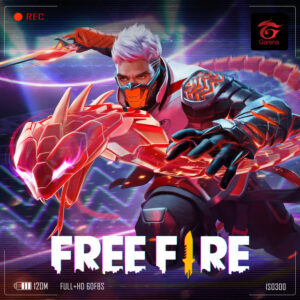To Tune or Not to Tune: The Great Gnasher Debate in Gears of War: Reloaded
Popular Now
 Grand Theft Auto V
Grand Theft Auto V
 God of War Ragnarök
God of War Ragnarök
 Call of Duty
Call of Duty
 Garena Free Fire: Kalahari
Garena Free Fire: Kalahari
 R.E.P.O
R.E.P.O
 Free Fire
Free Fire
 Stumble Guys
Stumble Guys
 EA SPORT FC 25
EA SPORT FC 25
 Geometry Dash
Geometry Dash
 Roblox
Roblox  The highly-anticipated launch of Gears of War: Reloaded was a major moment for fans of the iconic third-person shooter. As a faithful remaster of the 2006 original, it was designed to deliver the classic experience with modern polish, including 4K visuals and a buttery smooth 120 FPS. However, the game’s release has reignited one of the most passionate and long-standing debates in the Gears of War community: the Gnasher. The game’s signature weapon, the Gnasher shotgun, has been the subject of intense discussion since launch, with players divided on whether The Coalition’s decision to “fix” its core mechanics was a good thing or a fundamental mistake that changes the very nature of the game’s multiplayer. This ongoing controversy has led to a significant spike in searches for “Gears of War Gnasher tuning,” “Gnasher inconsistency Reloaded,” and “Gears of War Reloaded best multiplayer weapon.”
The highly-anticipated launch of Gears of War: Reloaded was a major moment for fans of the iconic third-person shooter. As a faithful remaster of the 2006 original, it was designed to deliver the classic experience with modern polish, including 4K visuals and a buttery smooth 120 FPS. However, the game’s release has reignited one of the most passionate and long-standing debates in the Gears of War community: the Gnasher. The game’s signature weapon, the Gnasher shotgun, has been the subject of intense discussion since launch, with players divided on whether The Coalition’s decision to “fix” its core mechanics was a good thing or a fundamental mistake that changes the very nature of the game’s multiplayer. This ongoing controversy has led to a significant spike in searches for “Gears of War Gnasher tuning,” “Gnasher inconsistency Reloaded,” and “Gears of War Reloaded best multiplayer weapon.”
In the original Gears of War, the Gnasher was a weapon of both immense power and frustrating inconsistency. Its spread was wide, its range was a mystery, and its hit detection was notoriously tied to a terrible netcode. In Gears of War: Reloaded, The Coalition has made a conscious effort to address these issues, implementing a tighter spread and more consistent hit registration. On paper, this sounds like a win-win. In practice, however, it has created a new set of problems and divided the community into two distinct camps.
The Case for “Fixing” the Gnasher: The Pursuit of Consistency
For one side of the community, The Coalition’s changes to the Gnasher are a welcome and long-overdue improvement. They argue that the weapon’s original design, while iconic, was a relic of a bygone era of gaming. The unpredictable nature of the Gnasher in the original led to countless frustrating moments where a seemingly perfect shot would deal no damage, and a wild blindfire would inexplicably secure a one-shot kill. This was often attributed to the original game’s “shots from the center of the screen” mechanic, which made close-quarters combat feel like a roll of the dice.
- Improved Hit Registration: The primary argument in favor of the new Gnasher is its improved hit registration. Players are now able to trust that their shots will connect when they should, reducing the number of frustrating “ghost shots.” This leads to a more predictable and fair experience, where skill and precision are rewarded.
- Higher Skill Ceiling: With a tighter spread, the Gnasher in Reloaded demands more precise aiming. No longer can players simply spray and pray in the general direction of their opponent. The new tuning forces players to aim for specific body parts, increasing the overall skill ceiling and making a clean, well-aimed shot feel incredibly rewarding. This shift is a key reason why pro players and competitive enthusiasts are largely in favor of the changes.
- A More Modern Feel: The new Gnasher aligns the game with modern shooter design, where consistency and player feedback are paramount. It makes the game more approachable for newcomers and provides a more stable foundation for competitive play. The old Gnasher, while nostalgic, was a barrier to entry for many new players.
 The Case Against “Fixing” the Gnasher: The Loss of Identity
The Case Against “Fixing” the Gnasher: The Loss of Identity
On the other side of the fence are the purists, who argue that by “fixing” the Gnasher, The Coalition has fundamentally changed the game’s identity. They claim that the unpredictable, chaotic nature of the original Gnasher was not a bug, but a feature—a core part of what made Gears of War‘s multiplayer so unique and satisfying. For these players, the “Gnasher dance”—the close-quarters, high-risk, high-reward ballet of wall-bouncing and blindfiring—is what defined the experience.
- The “Sniper Gnasher” Problem: The biggest complaint from this camp is that the tighter spread has effectively turned the Gnasher into a mid-range rifle. One-shot downs from a surprisingly long distance are now a common occurrence, which fundamentally changes the way the game is played. Instead of needing to get up close and personal, players can now “pop shot” from a distance, making aggressive, up-close plays a much riskier proposition. This change has drawn comparisons to the widely-disliked “Tuning Update 6” from Gears of War 2, which many fans consider to be one of the worst changes in the series’ history.
- Less Rewarding Hip-fire: With the tighter spread, hip-firing is far less effective, leading many players to rely on the more reliable but less dynamic “pop shot” style of play. This removes a key part of the original game’s movement-based combat, where players would skillfully blindfire while bouncing between cover, making the game feel less fluid and more static.
- The Original Chaos Was the Fun: The purists argue that the “inconsistency” was what made the Gnasher so thrilling. Every kill felt like an achievement, and every death was a memorable moment of frustration. The raw, unpolished nature of the original Gnasher was what made it feel like a truly dangerous and visceral weapon. By sanitizing it for a modern audience, The Coalition has removed the very soul of the multiplayer experience.
Ultimately, the debate over the Gnasher in Gears of War: Reloaded is a microcosm of a larger discussion about remakes and remasters. The Coalition faced an impossible choice: to faithfully recreate a flawed but beloved system or to modernize it for a new generation. There is no right answer, as both sides have valid points. The Gnasher in Reloaded is undoubtedly a more consistent and reliable weapon, but for many, it has lost the chaotic charm that made it so iconic in the first place. The continued conversation around this single weapon proves that for a game as beloved as Gears of War, some “bugs” are not bugs at all—they are features that define an entire generation of gaming.









 The Case Against “Fixing” the Gnasher: The Loss of Identity
The Case Against “Fixing” the Gnasher: The Loss of Identity